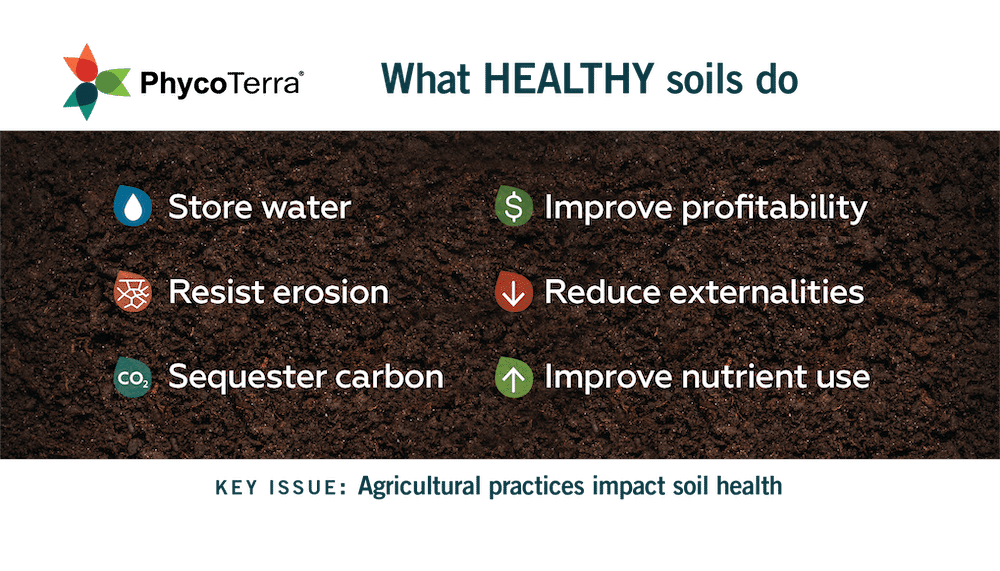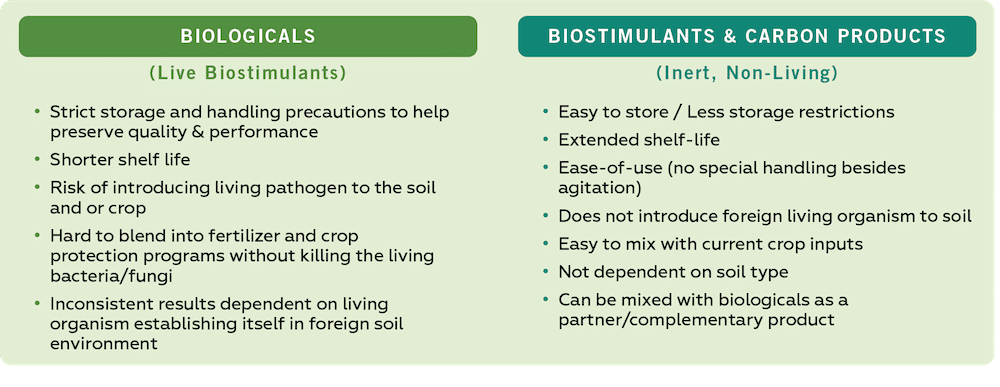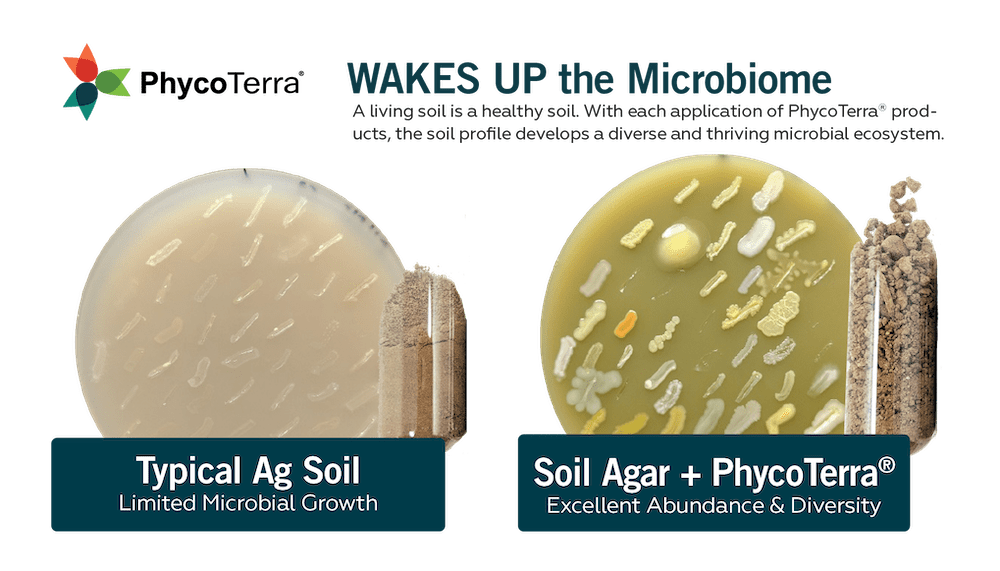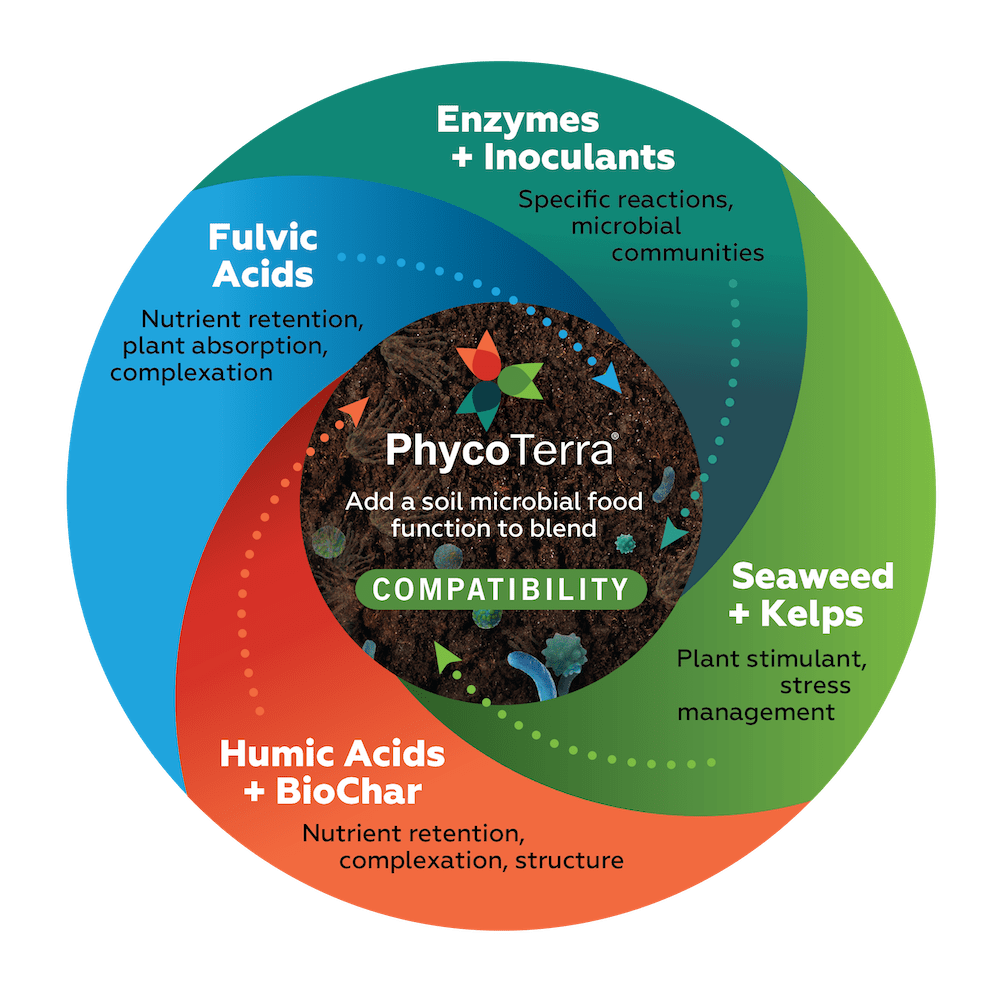Apr 11, 2025

If you’ve ever heard the terms “carbon products”, “biologicals”, or “biostimulants”, and scratched your head in confusion? You’re not alone. Growers looking for new ways to evolve their farms and boost yields to meet the demands of their market can be hit with a wave of confusing data and overwhelming options when looking for new products and potential inputs.
The biostimulants category be even more confusing for growers – there’s been a boom of interest in recent years, with the market size for biostimulants projected to reach 5.35 billion USD by 2027. The market is relatively new and growing at an exponential rate, information and regulation have not quite caught up, leaving growers in the dark. (Fortune Business Insights | Biostimulant Market Report)
To choose the right product for your field, you need to ask the right questions:
One of the reason these products are becoming so popular is because there is a renewed interest among growers, ag retailers, and even food companies, in natural solutions to a growing problem – improving agricultural soil health.
When we talk about soil health, what we’re essentially talking about is soil’s ability to successfully do its job – fostering and growing plant life. Healthy agricultural soil supports crop growth and yield potential in a variety of ways: storing water, resisting erosion, optimizing nutrient use, and reducing the impact of abiotic stresses.
On a larger scale, healthy soils also help the planet – because they resist erosion, healthy soils help keep agricultural runoff from polluting watersheds, and they also act as a “carbon sink” by sequestering carbon from the atmosphere into the soil.

A key indicator of soil health is the activity and diversity of its biological component, known as the soil microbiome. Modern agricultural practices, such as tilling and monoculture, disrupt and deplete the microbiome, which means most of our agricultural soils are not as healthy as they could be.
Unhealthy soil has poor water storage, poor structure, low nutrient use efficiency and is susceptible to both water and wind erosion. Most importantly for growers, unhealthy soil cannot optimize yield because the soil is unable to support the crops’ full yield potential. Growers interested in improving the health of their soil in natural, sustainable ways are turning to carbon products and biostimulants to get this done.
Many terms exist today – carbon products, biologicals, biostimulants – covering lots of different products. While “biostimulant” is the term growers may be hearing the most, at Heliae Agriculture, we often use the term “carbon products” because it’s a wide umbrella many products, including PhycoTerra, fall under. Whether a product is defined as a biological or a biostimulant, the backbone of that product is carbon. And carbon chemistry matters. The unique chemistry of each product that fall into these categories will determine what benefit the product delivers for the grower.
The term “biostimulant” does not have a firm legal or regulatory definition yet, but it has appeared in the 2018 Farm Bill. In general, a biostimulant or carbon product is any natural (i.e., not synthetic) substance or organism that, when applied to the seed, plant, or soil, works to positively impact the crop and crop nutrition through natural processes, such as improving nutrient use efficiency or reducing the impact of abiotic and biotic stresses, regardless of the content of the product. (Agricultural Improvement Act 2018)
These products vary in mode-of-action and direct benefit to growers. Because they are a newer agriculture technology, these products may be called different things in different states and countries due to local regulations, whether that’s a stimulant, a soil amendment, or a natural fertilizer. Biologicals and biostimulants are also a bit different.

All biologicals are biostimulants, but not all biostimulants are biologicals. A biological is simply a biostimulant containing a living organism (e.g., Bradyrhizobia soybean inoculants, Bacillus and Pseudomonas inoculants, Trichoderma inoculants, to name a few). While all biostimulants originate in nature, not all are living. Some carbon products are a chemical byproduct of formerly living organisms (humic acids). Many have been treated, whether by pyrolysis (biochar), hydrolysis (hydrolysates) or pasteurization (PhycoTerra) so they are an inert, non-living form of a formerly living substance.
Biologicals are biostimulants still alive in their product form. A good example of this would be inoculants, common seed treatments which contain live cultures of N-fixing bacteria known as Bradyrhizobia. Biologicals are also available as liquid products containing live cultures of beneficial microbes and fungi – these products are added directly to the soil.
Biologicals are common in the biostimulant market, but because they contain living organisms, there can be issues with product stability, inconsistency in results, product storage and handling issues, and ease-of-use in the field.
PhycoTerra is a carbon product that activates the soil microbiome to promote soil health. PhycoTerra is a unique formula in the carbon product category as it has a well-defined mode-of-action, ease-of-use, and consistent performance. PhycoTerra is a superior soil microbial food, which supports soil health by feeding, thus activating the beneficial microbes native to your soil. These microbes then wake up and get to work for your crops and your field, improving soil structure, optimizing nutrient use efficiency, and improving water holding capacity.
Like other carbon products and non-living biostimulants, it may out-perform biologicals in the field because it has more consistent results, mixes well with other inputs, and has an excellent shelf life (up to 2 years) with no special storage requirements (can be stored outside and does not require temperature-control). PhycoTerra is created in a controlled environment and is pasteurized before packaging, guaranteeing a reduced pathogen load.
In contrast to other microbial foods, PhycoTerra is a balanced food source with a 7:1 C:N ratio. This makes it easily digestible by a broad range of soil microbes, promoting microbial abundance, diversity, and optimal nutrient mineralization.

PhycoTerra has a flexible application window and is compatible with many other crop inputs, including biostimulants and biologicals. Depending on your soil’s needs, adding PhycoTerra to your biostimulant mix can create a complementary blend that work together to boost your soil’s health.
Beneficial Living Organisms (Biologicals) – living beneficial bacteria and fungi can be added to both the seed and the soil in the form of inoculants to help mineralize nutrients in the soil as well as promote nutrient uptake in the plant by forming a symbiotic relationship with the plant roots. Biologicals may have difficulty surviving processing, storage, and introduction to a foreign field, which can limit their efficacy.
Microbial Foods – products in this category focus on feeding the native microbes in soil that do important jobs for the plant. These include PhycoTerra, molasses, fish by-products, and algae like seaweeds and kelp. Different beneficial microbes do different jobs in the soil, so microbial foods that promote microbial abundance and diversity are ideal. PhycoTerra is a carbon product that utilizes microalgal technology (focused on microscopic algae native to soil) to feed a diverse range of native microbes a balanced meal. Microbial foods can have a wide range of quality and consistency (seaweed/kelp that are naturally harvested can be inconsistent) as well as C:N ratios (molasses is mostly sugar), making their nutritional benefit for microbes vary widely.
Humic and Fulvic Acids – a group of chemicals formed when plants and animals break down – they are found in humus, the major organic fraction of soil. While they both have origins in the organic materials in soil, humic and fulvic acids act upon soil differently because of their different molecular weights (size), charge, nutrient holding capacity, and the pH at which they become soluble. These acids are attracted to the root “depletion zone” (i.e., where the root uptakes nutrients from the soil), improve cation and anion exchange capacity (CEC & AEC) and prevent important nutrients and minerals from leaching away through the soil or volatilizing to the atmosphere.
Biochar – a charcoal-like substance produced by burning agricultural wastes (such as crop straw) in a controlled process called pyrolysis. This process converts the organic biomass into a stable form of carbon. Biochar is applied to the soil and can increase soil fertility, prevent leaching of important nutrients, and adjust soil pH. Biochar can also serve as a habitat for microbes below ground. Biochar is an excellent way of keeping carbon out of the atmosphere and returning it to the soil.
Hydrolysates – these are proteins and enzymes that have been extracted from formerly living plants and animals through a process called hydrolysis. Hydrolysates can be applied to the soil or through foliar, and it’s still unclear whether hydrolysates work on the plant directly, with microbes, or both. Different hydrolysates can have different results on different crops, from activating plant defenses to inhibiting pathogens to increasing growth and chlorophyll in plant leaves by impacting the diversity of the phyllosphere microbial community.
Blends – biostimulants can be mixed to form a blended product. The goal of these blends is to try and provide growers with an “all-in-one” product. Blends should be tailored to the needs of the soil and the crop by mixing products with different modes-of-action and complimentary benefits.
Some biostimulants, biologicals and carbon products can be mixed to give growers the benefits of their different modes-of-actions.

Biostimulants and carbon products are a growing part of regenerative agriculture and are a good choice for any grower looking for a natural way to increase their soil’s health, take advantage of the properties of healthy soil, and optimize their crop’s potential yield. Since different biostimulants and carbon products have different modes-of-action, act on the soil and plant in different ways, and interact with current crop inputs differently, it’s important to assess your field, your operation, and your goals to find the product that will work best for you.
Your local agronomist / extension office is a great resource for understanding what is available and what your field needs.
Questions to ask might be:
Every field is different and understanding biostimulants, biologicals, and carbon products, and the different ways they work can help you get the most out of your field and your crop. Discussing your field with your local crop adviser is the best way to determine which biostimulants will provide the benefits your crop needs to thrive.
Interested in how a carbon product like PhycoTerra can help support your specific crop’s yield goals? Check out our field trial summaries to find out the ROI boost PhycoTerra can provide for your crop.
Want an even deeper dive into the world of carbon products and biostimulants? Check out the recording of our most recent webinar to hear Dr. Karl explain the science behind carbon products and how to get the most out of them.